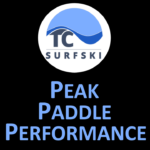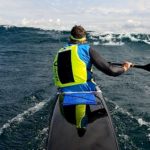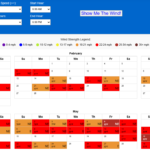Top 10 Tips and Tricks to Improve your Stability
It is no secret that there are a lot of surf ski paddlers who despite well intentioned efforts, are still not as stable in their boats as they should be. Until just recently, there weren’t a lot of really stable boats on the market, so in most cases, it is no fault of the paddler, rather a circumstance of what was available to them. As much as I’d like to see paddlers move into more stable boats, I know that isn’t always a reality, and anyone brave enough to venture into surf ski paddling in the first place is likely to be stubborn, gritty, and up for a challenge. With that said, I thought I would write this post to list out the top 10 tips and tricks to help someone become more stable
- Paddle Length – The length of the paddle is often overlooked as a factor in stability. A lot of paddlers that come from a sea kayaking background are still paddling with way too much length for surfski. Big, strong, world champion paddlers like Sean Rice and Oscar Chalupsky often paddle around 212. Unless you are throwing down that type of power (i.e. can sprint your boat up over 10 mph) , you probably don’t need to be much over 210 in length, and I would even suggest trying shorter. The shorter length allows for a higher cadence which improves stability .
- Paddle Grip – Make sure you are keeping your hands wide enough on the paddle. As Sean Rice instructs, your pinky should be 2-3 finger widths from where the blade tape reach up the paddle shaft (the white or yellow tape if you have an Epic paddle). Too narrow of a grip can cause stability challenges.
- Paddle Stroke – Make sure your catch is solid (blade speared into the water and buried) and you are getting the blade out clean and not too late in the stroke (think about pulling it out at the knees to ensure it is out at the hip). As long as your catch is solid and your exit is clean, you’ll always benefit from increasing your cadence when your stability gets challenged.
- Heel pressure – As I learned from Jasper Mocke several years ago, you have to imagine your stability in the surf ski as a tripod. The stroke side heel, blade, and butt cheek make up the three points of the tripod. Remove pressure from any one of the three and you are exposed. In basic terms, make sure your stroke side heel is driving into the footboard. As soon as the pressure if off on one heel, it should be transferred to the other. Also remember to keep a blade in or on the water at all times.
- Seat Pads – If your stability is solid on flat water, use seat pads to challenge yourself more on flat water and then remove them when it gets rough. If you haven’t experimented with pads, you’ll be amazed at how much difference just a single 1/4 inch pad will make.
- Footboard length – If your knees are too high, play around with extending your footboard length. Lowering the knees will definitely help stability, just be careful you don’t go too far and compromise leg drive/heel connection or allow your posture to slouch.
- Chin Up – It always helps to remind yourself to keep your chin up and look at the horizon. Trying to watch all the the waves and getting tunnel vision won’t help your stability as much as you think it might. Additionally, keeping your chin up will help with your posture.
- Elbows down – Generally lowering your arms and specifically your elbows will help add stability when you need it. Watch video of the best guys in the world and you will notice times when they drop their elbows/arms during long distance open ocean races.
- Master your brace – this can’t be over emphasized enough. If you don’t have a solid brace on both your left and right sides, you’ll always be susceptible to getting knocked off your boat. Put in the time, do the drills, and master the brace. If you do this, aside from getting hit hard by a dumping wave, you should never get knocked off your boat.
- Trim up your mid section – Last but not least, this one rarely gets talked about, but if you’re carrying a few extra pounds above the waist line, this is going to have a massive impact on your stability. Simple physics. I’ve written quite a few blogs on my own diet experiments, and I am very far from an expert in this area, but if you are carrying extra weight, there is a good chance you’ve developed some level of insulin resistance and cutting down on carbohydrate for a while will probably help tremendously. Do your cardio in the morning in a fasted state and if you are going to eat carbohydrates, try to time it in the afternoon shortly after some resistance work (doesn’t have to be a lot – a handful of push ups, pull up, and body squats can do a lot to temporarily shift your system into a favorable state for processing carbohydrate). There is of course volumes of information out there on how to lose weight, but I’ll just add that as much as most of us hate to acknowledge it, it is extremely difficult to lose weight without changing up your diet.
If you’ve tried all of the above, and still can’t make progress in your stability, then it may be time for a more stable boat. There are now lots of options to choose from, and if you enjoy paddling, you owe it to yourself to be comfortable, safe, and smiling on the water at all times. Like it or not, as we age, our balancing skills slowly decline. But the good news is that the statistics are clearly showing that the “beginner” boats really aren’t that much slower than the advanced surfskis, even on flat water. Add in mixed conditions, and most paddlers are often surprised to find they are faster in a “slower” boat.



